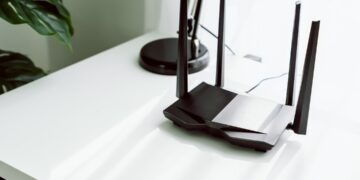The last 18 months wreaked havoc on supply chains across industries. Car manufacturers slowed production because of computer chip shortages.
Retailers and grocery stores work to restore supplies ahead of the holiday season. Consumers are so concerned about holiday shopping, about 75% plan to order gifts earlier this year.
There isn’t much you can do about supply chain shortages, except track products as best as you can. Inventory management becomes even more important.
Many retailers still struggle with accurate inventory tracking. The slightest variance this year can have horrible consequences for your business.
How can you ensure you have an accurate inventory count? Read on to learn about the best devices to use to track inventory and inventory management best practices.
1. Barcode Scanner Gun
Table of Contents
A barcode scanner gun is a device to help you manage inventory at the point of sale. You see this device at brick and mortar retail stores, and it comes in handy when scanning large items that won’t fit on the counter.
It’s possible to use a barcode scanner gun in ecommerce operations as well. Instead of using it when customers check out, you’d use it when you pack and ship items.
2. Consumer Phone or Tablet
How would you like to manage inventory without spending a lot of money on devices? You can easily track inventory using a smartphone or tablet.
All you have to do is install a barcode scanner app for inventory and you have everything you need to manage inventory.
3. Barcode Label Printer
Accurate inventory relies on your barcode system. You need to choose a standard for your barcodes, the most common being UPC codes. If you’re selling books, the ISBN number is the standard to use.
Barcodes contain your business identification and manufacturer’s identification numbers. You need to register your business with GS1. It’s a non-profit organization that supports global barcode standards.
You’ll get your company’s ID number and use that to create your unique product barcodes.
The next step is to print barcode labels and stick them on products. A barcode label printer makes the entire process easy.
4. RFID Device
RFID technology has been around for a very long time. It’s only up until now that retailers see this technology as a necessity to manage inventory.
Retailers that sell through multiple channels have an extra burden to manage inventory. RFID allows them to automate inventory management with greater accuracy.
RFID devices use radio waves and RFID tags to communicate with each other. You put the tags on products and the RFID device picks up the location of the product.
This gives retailers an additional layer of data. You can give customers a better in-store experience by leading them to the products they want.
You can also analyze data to check in-store traffic patterns and product interest.
5. POS System
We mentioned that barcode scanner guns are part of a point of sale system. What are the other components?
The main function of the POS system is to accept payments. The backend of the POS system tracks inventory, pricing, and revenue.
6. ERP System
Large organizations that have multiple retail locations need a way to centralize data. Enterprise resource planning is a way to help you do that.
ERP is a complete system that contains customer management, accounting, inventory, POS, and shipping data. You can track every step of the supply chain and manage each location.
7. IoT Inventory Management Devices
IoT stands for Internet of Things. These are devices like handheld computers and robots that connect to the internet.
Companies use IoT to manage inventory. They can track products by location, right down to the storage bin. You can even learn how long products sit on shelves immediately.
That gives you more information so you can decide what products to discontinue. Some companies combine IoT devices with RFID to automate and streamline inventory management.
Inventory Management Control Tips
Inventory accuracy helps boost sales by up to 4%. The challenge is that most retailers have an accuracy percentage of 65%.
The inventory management devices listed above are tools. They’re only as effective as your inventory management system.
Figure out what products you need to track. Are they seasonal or perishable items? If so, you’ll need to have a system that includes expiration dates.
Ask yourself what features you need from an inventory management system. Do you have one retail location? You might have several locations, several stock rooms, and one main warehouse.
Think about the growth of your business as well. When you choose an inventory management system, you want to find something that fits your needs now and several years from now.
Otherwise, you’ll have to migrate to a new system. That costs your business time and money.
Conduct an inventory audit. This gives you an accurate count of your current inventory. Match it up with your records and see if there are discrepancies.
You should do this quarterly. You’ll find that your accuracy numbers improve as you refine your system.
Track Products and Manage Inventory
Your business hinges on your ability to track products accurately and efficiently. The inventory management devices here show you that you have a broad range of solutions no matter how large or small your operation is.
You can use technology that you already have like smartphones and apps or you can invest in emerging technology like IoT devices.
If you enjoyed this article about inventory management, you’ll like the other technology articles on this site. Click on the Technology tab at the top and check them out.




















